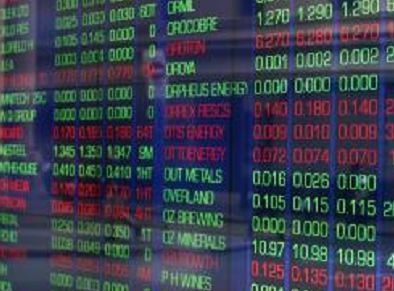
While the rest of Scandinavia turns into a laboratory for negative rate policies, the Norwegians are finding that billions of dollars in government support may spare them such extreme monetary experiments.
Western Europe’s biggest crude producer is feeling the weight of its $860 billion sovereign wealth fund, which is helping steer Norway in a different direction from much of the rest of the developed world. With economies elsewhere relying on monetary policy as their fiscal stimulus levers remain untouched, it’s quite a different story in Norway.
Norges Bank Governor Oeystein Olsen and his colleagues will on Thursday keep their benchmark deposit rate unchanged at a record low of 0.5 percent, according to 17 of 18 analysts surveyed by Bloomberg. Meanwhile, the government is tapping the wealth fund this year for the first time, as the piggy bank fulfills its role in providing a fiscal buffer to the Norwegian people, Scandinavia’s wealthiest.
“We have a great advantage in our expansionary fiscal policy,” Marius Gonsholt Hov, an economist at Handelsbanken in Oslo, said by telephone. “The use of oil money is adjusted to the economic cycle, which means that automatic stabilizers work on top of that. So there’s a pretty solid contribution from the public sector into GDP right now.”
The central bank in March delivered a quarter-point cut and signaled it was prepared to ease further to avoid an outright recession. But policy makers also signaled restraint as the impact of easing becomes less clear the lower rates go. Experiences elsewhere show the distortions negative rates can cause may be cause for concern.
“As the key policy rate approaches a lower bound, the uncertainty surrounding the effects of monetary policy increases,” the bank said after its latest rate decision. “This now suggests proceeding with greater caution in interest rate setting. Should the Norwegian economy be exposed to new major shocks, the executive board will, however, not exclude the possibility that the key policy rate may turn negative.”
And while the overall economy has all but stalled, unemployment is still below 5 percent even after thousands of job losses in the oil industry. Part of the resilience is due a weaker krone, which has depreciated along with falling oil prices and rate cuts, helping the non-oil parts of the economy to pick up some of the slack.
The krone is about 14 percent below its average against the euro over the past five years even after rallying almost 4 percent from a low in January. The price of Brent crude has gained 58 percent since January, but is still at a level where new big offshore investments are hard to justify.
That’s why many analysts expect another rate cut later this year. Some even predict that Norway’s monetary policy makers will ultimately need to delve below zero.
Handelsbanken’s Gonsholt Hov says inflation will subside in the second part of the year as the effects of a weaker krone wear off wage growth slows. Real income growth will be negative this year, which will weigh on consumer spending, he said. He expects rates in Norway to go negative in the first quarter of next year.
“It’s too early to say that the worst is behind us,” he said. “One risks getting really surprised over the year if one thinks things have gotten better now just because the oil prices has recovered a bit.”
But it won’t be for a lack of government spending. This year, the Finance Ministry will use oil income equivalent to about 7 percent of mainland gross domestic product to support the economy.
Recommended for you
